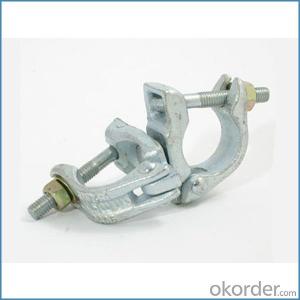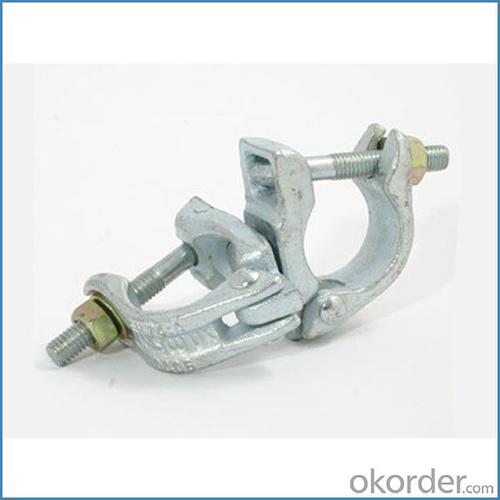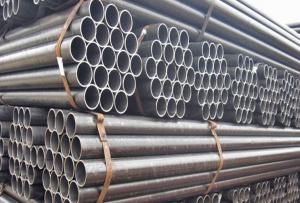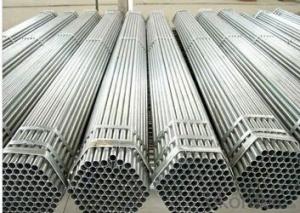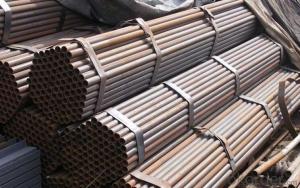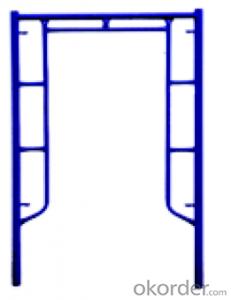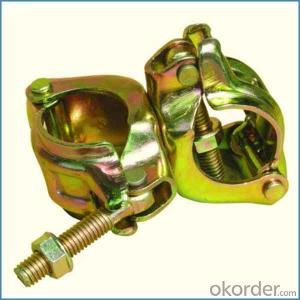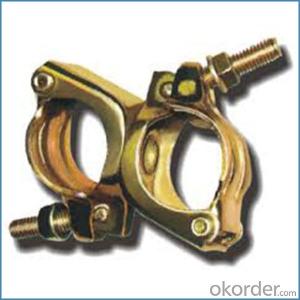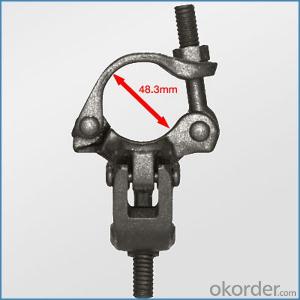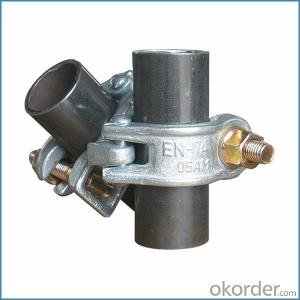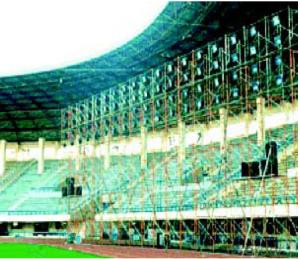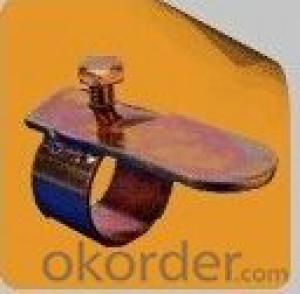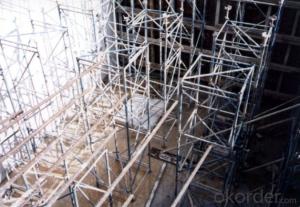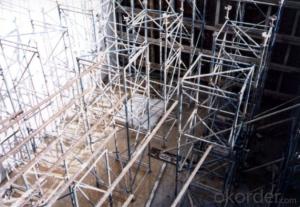Construction Scaffold Couplers British Type for Sale
- Loading Port:
- Tianjin
- Payment Terms:
- TT OR LC
- Min Order Qty:
- 1000 kg
- Supply Capability:
- 100000 kg/month
OKorder Service Pledge
OKorder Financial Service
You Might Also Like
Construction Scaffold Couplers British Type for Sale
Description
1.The scaffolding coupler is always used to connect the steel pipe as scaffolding system.
2.The often used coupler is swivel coupler and righ angle coupler .
3.We can provide types of scaffolding coupler according to your requirement.
4.Couoler can fix the 48.3mm scaffolding steel pipe tightly and make the whole scaffolding system more steadily.
5.Material:Q235 steel
6.Overall Size:48.3mm*48.3mm
7.Surface Finish: Galvanized/ Painted
8.Standard:BS1139,EN74
9.Package:25pcs/bag
10.Manufactuering as per customer requirements
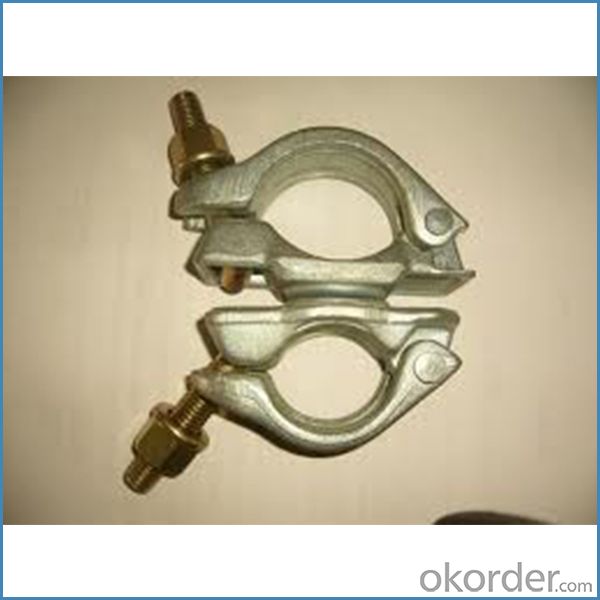
Feature
(1)Excellent Anti-Breaking—Cold Pressed Steel
(2)Outstanding Resistance Deformation
(3)Strong Anti-Dropping Ability
(4)Longtime USe
(5)Qualtity Guaranteed
(6)OEM Service
Photo
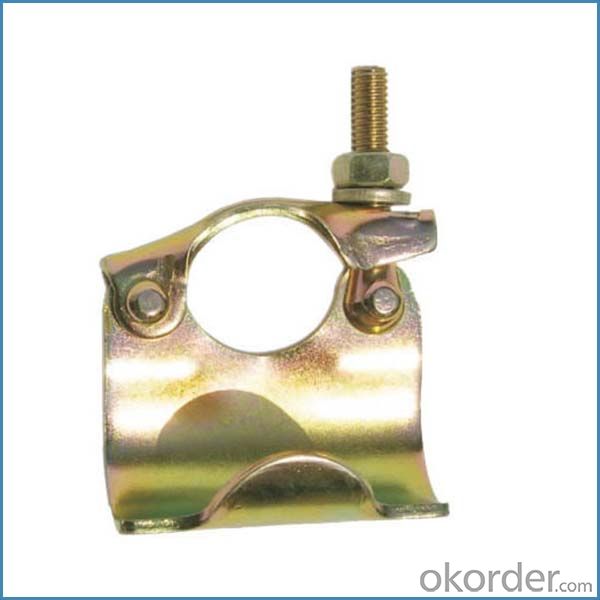
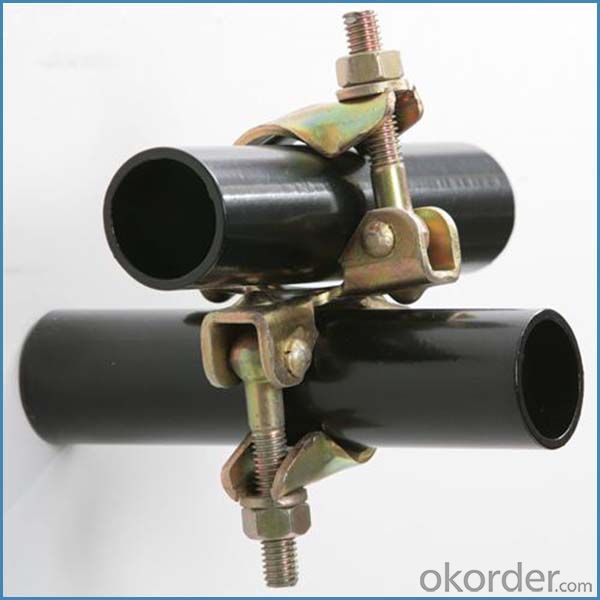
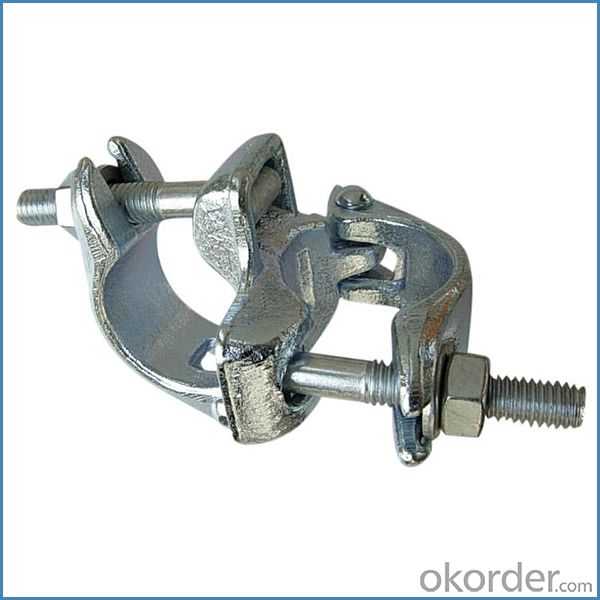
Parameter
| Material | Q235,345steel |
| Size | 48.3mm*48.3mm |
| Surface finish | Galvanized |
| Weight | 1.1kg around |
| Standard | BS1139,EN74 |
| Package | 25pcs/bag,steel pallet |
| Manufacture | As per customer requirement |
| Market | Africa, South America, the Middle East and Asia |
FAQ
Q: Are you a factory or trading company?
We are a state-owned corporation in China,dealing with various kinds of building materials.We have our holding subsidiaries.
Q: Where is your factory located? How can I visit there?
Our factory is located all around China.
Q: Can I get some samples?
Sample is free, customer only pay freight for the first time.
Q: Delivery?
10-30days. (5-15 containers)
Any question,feel free to contact us.
- Q: Are there any specific guidelines for spacing and positioning steel tube couplers on scaffolding tubes?
- Yes, there are specific guidelines for spacing and positioning steel tube couplers on scaffolding tubes. These guidelines may vary depending on the specific regulations and standards of each country or region. However, in general, the spacing between couplers should not exceed a certain distance, typically around 1.5 meters (5 feet) apart horizontally and vertically. It is important to ensure that the couplers are properly aligned and tightened to ensure the stability and integrity of the scaffolding structure. Additionally, the positioning of couplers should be evenly distributed along the tubes to provide adequate support and load-bearing capacity. It is recommended to consult the relevant scaffolding regulations and standards to ensure compliance with the specific guidelines in your area.
- Q: Are steel tube couplers compatible with scaffolding systems that require different tube diameters?
- Scaffolding systems that necessitate distinct tube diameters are not compatible with steel tube couplers. These couplers are specifically engineered to join tubes of the same diameter, ensuring a sturdy and secure connection that upholds the scaffolding's stability and safety. However, if the scaffolding system mandates different tube diameters, such as a larger diameter for the primary structure and a smaller diameter for the cross bracing, the steel tube couplers will be incapable of properly linking the tubes. Consequently, alternative couplers or connectors, explicitly tailored for different tube diameters, must be employed to guarantee compatibility and safety.
- Q: why scaffolds need to be inspected within the preeceding 7 days and after adverse weather condition?
- rust could weaken the metal
- Q: Can steel tube couplers be used for scaffolding applications in marine environments?
- Yes, steel tube couplers can be used for scaffolding applications in marine environments. Steel tube couplers are commonly used in construction and scaffolding projects due to their durability and strength. They are designed to provide a secure connection between two steel tubes, creating a stable structure. In marine environments, where there is exposure to saltwater, humidity, and other corrosive elements, it is crucial to choose materials that can withstand these conditions. Steel tube couplers are typically made from high-quality steel that is resistant to corrosion. These couplers are often galvanized or coated with protective layers to further enhance their resistance to rust and corrosion. Additionally, steel tube couplers have been extensively tested and proven to perform well in various environments, including marine applications. They have been used in the construction of docks, piers, and other marine structures, where they are exposed to constant contact with saltwater and harsh weather conditions. It is important to note that regular maintenance and inspections should be conducted to ensure the integrity of the scaffolding system in marine environments. This includes checking for any signs of corrosion, damage, or wear and tear on the steel tube couplers and replacing them if necessary. Overall, steel tube couplers are a suitable choice for scaffolding applications in marine environments due to their strength, durability, and resistance to corrosion.
- Q: Can steel tube couplers be used in scaffolding projects that involve working at great heights or extreme weather conditions?
- Yes, steel tube couplers can be used in scaffolding projects that involve working at great heights or extreme weather conditions. Steel tube couplers are a popular choice in scaffolding due to their strength, durability, and ability to withstand heavy loads. They are designed to securely connect steel tubes, providing a reliable and safe framework for workers to perform their tasks. When working at great heights, safety is of utmost importance, and steel tube couplers offer a robust solution. They are engineered to provide a secure connection that can withstand the forces and stresses associated with working at elevated levels. Additionally, steel tube couplers are tested and certified to meet industry standards, ensuring their reliability and safety. In extreme weather conditions, such as strong winds, rain, or snow, steel tube couplers continue to maintain their integrity. The durable nature of steel makes it highly resistant to weather elements, ensuring that the scaffolding structure remains stable and secure. Couplers made from high-quality steel are also corrosion-resistant, minimizing the risk of degradation due to exposure to moisture or other environmental factors. Overall, steel tube couplers are suitable for scaffolding projects involving working at great heights or extreme weather conditions. Their strength, durability, and ability to withstand heavy loads make them a reliable choice for ensuring worker safety and the stability of scaffolding structures.
- Q: What are the potential consequences of using damaged or faulty steel tube couplers in scaffolding?
- The potential consequences of using damaged or faulty steel tube couplers in scaffolding can be severe. Firstly, it can compromise the overall stability and structural integrity of the scaffold, increasing the risk of collapse or accidents. This poses a significant danger to workers, potentially leading to injuries or even fatalities. Additionally, using damaged couplers can result in uneven weight distribution, causing the scaffold to become unbalanced and unstable. This can lead to the platform tilting or collapsing, further endangering those working on or around it. Furthermore, damaged or faulty couplers may not securely hold the tubes together, leading to the scaffold becoming loose or shifting unexpectedly, putting workers at risk of falling or being struck by falling objects. In summary, using damaged or faulty steel tube couplers in scaffolding can have serious consequences, jeopardizing the safety and well-being of individuals working at heights.
- Q: Are steel tube couplers resistant to impact and shock loads?
- Yes, steel tube couplers are generally resistant to impact and shock loads. The strong and durable nature of steel makes it capable of withstanding high levels of impact and shock without deformation or failure.
- Q: How do steel tube couplers contribute to the overall stability and rigidity of a scaffolding structure during heavy load transfers?
- The overall stability and rigidity of a scaffolding structure during heavy load transfers depend on the vital role played by steel tube couplers. These couplers are designed to create a robust and dependable framework for scaffolding systems by securely connecting and holding together steel tubes. One important function of steel tube couplers is to eliminate any potential weak points or areas of instability by providing a strong and reliable connection between the tubes. They firmly lock the tubes in place, preventing any movement or shifting of the scaffolding structure, even when subjected to heavy loads. This ensures that the structure remains stable and secure, minimizing the risk of accidents or collapses during load transfers. Furthermore, steel tube couplers evenly distribute the load across the entire scaffolding structure. They transmit the force from one tube to another, allowing the load to be effectively shared and dispersed throughout the system. This even distribution of weight helps maintain the structural integrity of the scaffolding, preventing any individual components from being overloaded or strained. In addition, steel tube couplers enhance the rigidity of the scaffolding structure by connecting the tubes at various angles and positions. This creates a triangulated framework, which is known for its exceptional strength and stability. The triangulation helps counteract any bending or deformation that may occur due to heavy loads, ensuring that the scaffolding remains rigid and resistant to movement. Moreover, steel tube couplers are highly durable and resistant to wear and tear. They are typically made from high-quality steel, known for its strength and longevity. This durability allows the couplers to withstand the pressures and forces exerted during heavy load transfers over extended periods of time without compromising their performance or integrity. In conclusion, steel tube couplers are indispensable components of scaffolding structures, significantly contributing to their overall stability and rigidity during heavy load transfers. By securely connecting the steel tubes, distributing the load evenly, enhancing the rigidity, and providing durability, these couplers ensure a safe and reliable scaffolding system, even under demanding conditions.
- Q: How do steel tube couplers contribute to the overall efficiency of a scaffolding structure during construction activities?
- Steel tube couplers play a crucial role in enhancing the overall efficiency of a scaffolding structure during construction activities. These couplers are essential components that connect and secure the steel tubes used in scaffolding systems. Firstly, steel tube couplers provide a strong and reliable connection between the steel tubes. This ensures that the scaffolding structure remains stable and secure, even under heavy loads. By securely fastening the tubes together, the couplers prevent any movement or wobbling of the scaffolding, minimizing the risk of accidents and enhancing worker safety. Moreover, the use of steel tube couplers allows for quick and easy assembly and disassembly of the scaffolding structure. The couplers can be quickly and securely attached to the steel tubes without the need for complex tools or specialized skills. This saves valuable time during the construction process, allowing workers to set up and dismantle the scaffolding more efficiently. Additionally, steel tube couplers offer versatility in terms of design and configuration. They come in various types and sizes to accommodate different scaffolding requirements. Whether it is a straight connection, right-angle joint, or swivel coupler, these components provide flexibility in constructing scaffolding structures that can adapt to the specific needs of the construction project. Furthermore, steel tube couplers are durable and resistant to corrosion, which is essential for ensuring the longevity and reliability of the scaffolding structure. Their robust construction allows them to withstand harsh environmental conditions, including extreme weather and heavy usage. This durability minimizes the need for frequent replacements or repairs, reducing downtime and costs associated with maintenance. In conclusion, steel tube couplers contribute significantly to the overall efficiency of a scaffolding structure during construction activities. By providing a secure connection, facilitating quick assembly and disassembly, allowing for versatile designs, and offering durability, these couplers enhance worker safety, save time, and ensure the reliability of the scaffolding system.
- Q: Do steel tube couplers have any specific safety certifications or approvals?
- Yes, steel tube couplers have specific safety certifications and approvals. These certifications ensure that the couplers meet certain safety standards and requirements. One of the most common certifications for steel tube couplers is the ISO 9001 certification, which ensures that the manufacturer has implemented a quality management system and adheres to strict quality control processes. Additionally, steel tube couplers may also have certifications from organizations such as the American Society for Testing and Materials (ASTM) or the European Committee for Standardization (EN), which evaluate the product's performance, durability, and safety. These certifications and approvals are important as they assure customers that the steel tube couplers they are using are of high quality and meet industry standards for safety.
Send your message to us
Construction Scaffold Couplers British Type for Sale
- Loading Port:
- Tianjin
- Payment Terms:
- TT OR LC
- Min Order Qty:
- 1000 kg
- Supply Capability:
- 100000 kg/month
OKorder Service Pledge
OKorder Financial Service
Similar products
Hot products
Hot Searches
Related keywords
